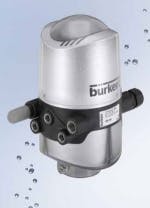Flexible Consenting in the UK: blue sky thinking or pie in the sky?
Ahead of Defra's planned Water White Paper in Autumn 2011, debate rumbles on over Flexible Consenting in the UK industry. Gordon McCreath and Sarah Merritt from legal firm Pinsent Masons ask just how flexible can consenting be given the current legal context.
There has been talk of the need for innovation in the UK water discharge consenting regime since the Cave Review in 2009. Recent work by Severn Trent argues that prescriptive outputs encourage a risk averse approach to meeting standards and can mean that more sustainable water treatment solutions are overlooked. One of the key themes in the suggestions made for changing the current regime is the idea of "flexible consenting". But how flexible can consenting be given the existing legal context? Collective thinking on this is still at an early stage. This article offers some initial thoughts on the hurdles that need to be overcome.
How would flexible consenting work?
Severn Trent has suggested that instead of a point source model of pollution control, the Environment Agency (EA) should operate on the basis of a catchment wide consenting system. This would involve looking at the total discharge from treatment works to a river catchment, moving away from setting identical limits on a point source basis. This would allow companies to prioritise the treatment works in which to invest in any given catchment.
A second method of flexible consenting would be to allow for varying standards at times of low and high river flow. This would maintain consistent water quality standards whilst reducing the carbon intensity of the water treatment.
The European legal context
So how would this fit with the principal pieces of European legislation governing water protection in the UK and Europe: the Urban Wastewater Treatment Directive (UWTD) and the Water Framework Directive (WFD)?
The UWTD requires that competent authorities monitor discharges from urban wastewater treatment plants at the point of discharge. Similarly the WFD, while obviously focusing on catchment based regulation, retains the emphasis on point source controls, albeit as part of a ‘combined approach'. So the EA could potentially adopt a catchment wide approach to setting discharge limits but there would still need to be a robust system of point source monitoring that complies with the requirements of the directives.
This should not, however, be a fundamental problem for flexible consenting. Some point source monitoring will surely always be necessary. Without it, any breach of a catchment wide threshold would be very difficult to trace. The UWTD also requires that the discharges from the plants that it covers comply with set parameters for e.g. biochemical oxygen demand, chemical oxygen demand and suspended solids on a per wastewater treatment plant basis. So the flexibility offered by flexible consenting will always be limited by these floor standards.
As well as these limits, however, there is arguably some room for manoeuvre in the UWTD. Other commentators have pointed to the sensitive area provisions of the directive, which allow derogations from the prescriptive limits for phosphorous and nitrogen where it can be shown that the minimum percentage of reduction of the overall load entering all plants in the relevant area is at least 75%.
Also worth bearing in mind is the Environmental Liability Directive (ELD). A regime that focuses purely on the macro without considering the micro could potentially lead to environmental liability-triggering "environmental damage" being caused at a sub catchment level, without there being a breach of a catchment wide consent. Any catchment wide consent would therefore have to also set a contaminant threshold range for vulnerable areas and remain subject to the requirements of the ELD.
Where pollution trading has worked internationally
There are a number of countries around the world where limited water pollution trading has been successfully introduced. In Australia the Hunter River scheme relies on the trading of credits and the timing of discharge release to coincide with high river flow. During times of flood, unlimited saline water can be discharged within certain catchment limits.
Credits can be traded between participants and the environmental regulator is involved both in approving trades and in disseminating the information relating to river flow to licence holders. However like the UWTD sensitive areas, this scheme is confined to a particular pollutant - salt. Calls within the UK for a different regime are not just confined to particular pollutants. The complications that arise from interactions of various pollutants means that any more sophisticated scheme could be substantially more difficult to introduce.
Moving forward
So there are a number of limits to the flexibility of current consenting regimes but none that blow the idea out of the water. Thinking continues to develop: the EA is running a five year "Balancing Carbon and Ecology" programme exploring the regulatory changes that can be made within the current regime to reduce the carbon footprint of treating wastewater. The Water White Paper to be issued by Defra in autumn 2011 will set out the UK Government's plans to reform the regulatory system, including by increasing flexibility. There is still room for flexibility in the UK approach to discharge consenting. We will look to the White Paper with interest.
More Water & WasteWater International Current Issue Articles
More Water & WasteWater International Archives Issue Articles


